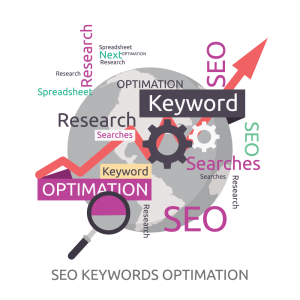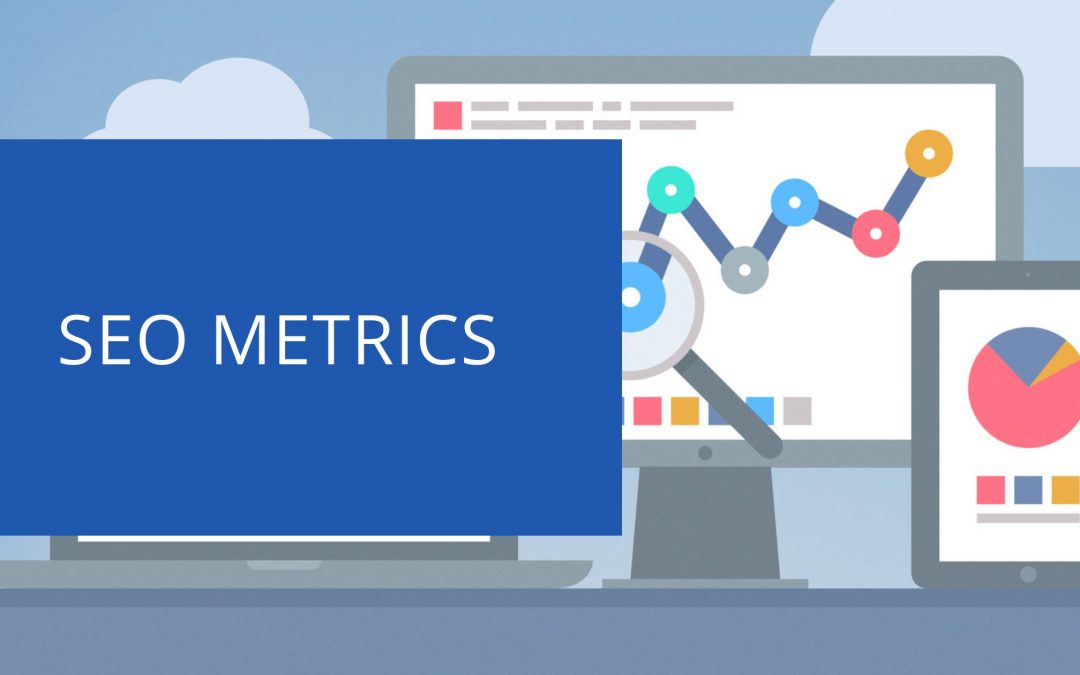Many SEO professionals know the importance of metrics, but it can be difficult to stay up-to-date on all of them. The good news is that there are only a few key metrics that you need to pay attention to keep your website ranking well and generating high-quality traffic. In this blog post, we will discuss what they are and how they work!
Contents
Backlinks and Referring Domains
One of the most important SEO metrics is backlinks. In short, a backlink is a link from another website that points to your website. The more backlinks you have, the better! Not only does this indicate that your website is popular and relevant, but it also tells Google that your site is an authority on the topic at hand.
![]() Referring domains are a related metric to backlinks. A referring domain is simply a domain name (e.g., google.com) that has linked to your website multiple times. This can be an indication of quality links from high-quality websites.
Referring domains are a related metric to backlinks. A referring domain is simply a domain name (e.g., google.com) that has linked to your website multiple times. This can be an indication of quality links from high-quality websites.
Both of these metrics play into Google’s algorithm for ranking websites. As always, Google wants to provide its users with the best possible search results, so websites with more backlinks and referring domains are likely to rank higher than those without.
So how can you increase your website’s backlinks and referring domains? There are many ways, but some of the most effective include creating great content that people want to share, participating in relevant online communities, and reaching out to high-quality websites for links.
Make sure you keep track of these two SEO metrics – they can make a big difference in your website’s ranking!
Bounce Rate
Bounce rate is another important metric to watch. The bounce rate of a webpage describes the percentage of users who navigate away from your website after viewing only one page. If you have a high bounce rate, it can mean that your website isn’t providing what people are looking for or that your site overall has poor quality content and information.
A low bounce rate indicates many things, including a positive user experience with engaging content on the page they’re currently browsing.
There are two main reasons why someone might leave quickly: either there’s something wrong with their device (e.g., slow internet connection) or they found what they were looking for somewhere else on your site and don’t need to browse any further pages at this time – most likely because they found the answer to their question.
You can decrease your bounce rate by ensuring that all of your web pages are properly optimized for SEO and that they contain high-quality, engaging content. You can also use tools like Google Analytics to track your bounce rate and see which pages have the highest and lowest rates. This information can help you further improve your website’s user experience.
Keep an eye on your bounce rate – it could make a big difference in your website’s ranking!
Click-through Rate (CTR)
Click-through rate (CTR) is another important SEO metric that indicates how users are interacting with your website. It measures the number of clicks an individual webpage receives in comparison to its overall traffic.
A high CTR means people are looking at, clicking on, and staying on your website’s pages – which can be a good indicator for Google! This tells them that people find it relevant, interesting, and engaging content since they’re taking actions within the site itself.
 It also gives you insight into specific areas where you can improve or optimize your homepage or other web pages for better conversions down the line too. For example, if someone found what they were looking for but didn’t stay past their first-page view because there wasn’t anything else of interest to them, you can improve your site’s layout or content so that it better appeals to different demographics.
It also gives you insight into specific areas where you can improve or optimize your homepage or other web pages for better conversions down the line too. For example, if someone found what they were looking for but didn’t stay past their first-page view because there wasn’t anything else of interest to them, you can improve your site’s layout or content so that it better appeals to different demographics.
A high CTR on a specific webpage could also indicate that the page needs more information before someone will decide whether they’re interested in what you have to offer. You might want to add some text explaining who you are and why people should trust your company for their needs – this is especially important if your website sells products!
Keep an eye on click-through rate (CTR) – it’s another great SEO metric that indicates how relevant users find your web pages!
Crawl Errors
Crawl errors are a type of error that Googlebot encounters when trying to crawl your website. They can be caused by various things, such as broken links, incorrect redirects, or server errors.
If you have a lot of crawl errors on your website, it means that Googlebot is having trouble crawling and indexing all of your pages. This can result in lower rankings for those pages and even the entire website.
You can find out how many crawl errors your website has and what’s causing them by using the Google Search Console. The console will show you a list of all the errors along with their specific URLs and the reason why they’re classified as an error.
Fixing these crawl errors is important because it ensures that all of your web pages are being indexed and ranked correctly. You can use the Google Search Console to help you fix them, but you can also use other tools like Screaming Frog or Webmaster Tools.
Keep an eye on crawl errors – they could be hurting your website’s ranking!
Domain Rating
Domain Rating (DR) is a metric that measures the strength and power of your website’s link profile. It considers factors such as the number of links coming into your site and more to determine how much authority you have within search engines like Google.
DR shows how powerful your website’s link profile is. A high DR score means you have a lot of authority within search engines, which can result in better rankings for your web pages!
An important thing to remember about domain rating is that it’s not something you can control or manipulate on your own – so don’t try! You shouldn’t go out and buy thousands upon thousands of low-quality backlinks just because they’ll raise your DR score; doing so could actually get you penalised by Google.
Instead, focus on creating high-quality content for users first and foremost with the goal being to generate natural backlinks from other websites.
Keep an eye on domain authority – it could mean the difference between ranking first or fifth on Google!
Impressions & Clicks
Impressions and clicks are important metrics that indicate how much traffic you’re getting to your website from a search.
 An impression in Google Search Console occurs when your website has been shown in the search results for a keyword. A click is when someone has clicked on your website in the search results.
An impression in Google Search Console occurs when your website has been shown in the search results for a keyword. A click is when someone has clicked on your website in the search results.
The number of impressions and clicks you’re getting for a particular keyword can give you an idea of how much traffic is available for that keyword is.
If the number of impressions is high but the number of clicks is low, it means your website isn’t ranking as high as it could be and you may need to do some SEO work on your pages.
Keep an eye on impression & click data – it’ll help you determine which keywords are worth targeting and where best to focus your efforts!
Keyword Rankings
Keyword rankings are a metric that shows how your website is performing for certain keywords. Rankings can be anywhere from not ranked at all to number 1.
Rankings data can help you determine which keywords are worth targeting and what kind of competition you’re up against. If you have a lot of high-ranking pages for a particular keyword, it means the competition is fierce and you’ll need to put in some extra effort if you want to rank higher.
If your website isn’t ranking at all for a particular keyword, it means there’s still work to be done! You’ll need to do some SEO research to find out what other websites are ranking for that keyword and analyse their content and backlinks.
Keep an eye on your website’s keyword rankings – they can tell you a lot about where your SEO efforts need to be focused!
Number of Pages Indexed
The number of pages indexed is a metric that tells you how many pages on your website have been crawled and added to the search engine index.
If the number of pages indexed is low, it means your website isn’t being crawled as much as it could be and you may need to do some work on optimising your site for search engines.
You can use the Google Search Console to help you determine which pages aren’t being indexed and why. You can also use other tools like Screaming Frog or Webmaster Tools.
Keep an eye on the number of pages indexed – more pages = more traffic!
On-page Optimisation Scores
 On-page optimisation scores are a metric that tells you how well your website is optimised for certain keywords.
On-page optimisation scores are a metric that tells you how well your website is optimised for certain keywords.
The higher the score, the better your website is performing for those keywords. You can use on-page optimisation scores to help you determine which pages need more work in terms of SEO.
You can use tools like SEMrush or Surfer SEO to analyse your website’s on-page optimisation and see what needs improvement.
Keep an eye on your on-page optimisation scores – they’ll help you improve your rankings!
Organic Conversion Rate
Organic conversion rate is a metric that tells you how many people are converting from organic search to leads or sales.
The higher the conversion rate, the better your website is performing for those keywords. You can use organic conversion rates to help you determine which pages are generating the most leads or sales.
You can use tools like HubSpot or Google Analytics to track your website’s organic conversion rate.
Keep an eye on your organic conversion rate – it’ll help you improve your ROI!
Organic Traffic
Organic traffic is a metric that tells you how much of your website’s traffic is coming from organic search.
The higher the percentage, the better your website is performing for those keywords. You can use organic traffic to help you determine which pages are generating the most traffic.
You can use tools like Google Analytics to track your website’s organic traffic.
Page Speed and Core Web Vitals
Page speed and core web vitals are two metrics that tell you how well your website is performing for page speeds and user experience.
Page speed is a factor that Google uses to determine whether or not your website should be shown in the search results. If your page load time is slow, you could be missing out on potential traffic from users searching for websites with faster loading times!
Both of these metrics are important to keep an eye on – a slow-loading website can hurt your SEO rankings and conversions
You can use tools like Google PageSpeed Insights to check your page speed and Web Core Vitals.
SEO Metrics FAQ
What are SEO metrics?
SEO metrics are a set of measurements that help you track and improve your website’s SEO performance. They can tell you a lot about how well your website is performing for certain keywords and how you can improve your rankings.
How can SEO metrics help me improve my rankings?
SEO metrics are an important part of any successful SEO campaign because they tell you how well your website is performing for certain keywords. By tracking them regularly, you’ll be able to make changes when necessary and keep improving!
What is the best way to track my SEO performance?
 The most common ways that people use to track their SEO campaigns are Google Search Console, Rank Trackers, and Google Analytics. There are also other tools like Screaming Frog, ahrefs, and SEMrush which offer great analysis on your site’s search engine visibility.
The most common ways that people use to track their SEO campaigns are Google Search Console, Rank Trackers, and Google Analytics. There are also other tools like Screaming Frog, ahrefs, and SEMrush which offer great analysis on your site’s search engine visibility.
Which one works best for you depends on what type of information you’re looking for – try a few out to see which ones work best based on this factor.
Which SEO metrics should I be tracking?
Some that you might also want to keep an eye on are keyword rankings, clicks and impressions from search, and organic traffic.
You can use ahrefs, rank tracking services, SEMrush, Google Search Console, and Google Analytics to track most of the common SEO metrics.
We Offer SEO Services Nationwide
- Chester:https://mediakynect.co.uk/seo-chester/
- Wirral: https://mediakynect.co.uk/seo-wirral/
- Liverpool: https://mediakynect.co.uk/seo-liverpool/
- North Wales: https://mediakynect.co.uk/seo-north-wales/
- Wrexham: https://mediakynect.co.uk/seo-wrexham/
Conclusion
SEO metrics are a set of measurements that help you track and improve your website’s SEO performance. By tracking them regularly, you’ll be able to make changes when necessary and keep improving!
Some that you might also want to keep an eye on are keyword rankings, clicks and impressions from search, and organic traffic. You can use ahrefs, rank tracking services, SEMrush, Google Search Console, and Google Analytics to track most of the common SEO metrics.
Keep an eye on your SEO metrics – they’ll help you improve your rankings!
You should now have a good understanding of some of the most important SEO metrics. These include organic conversion rate, organic traffic, speed and core web vitals, and keyword positions.

